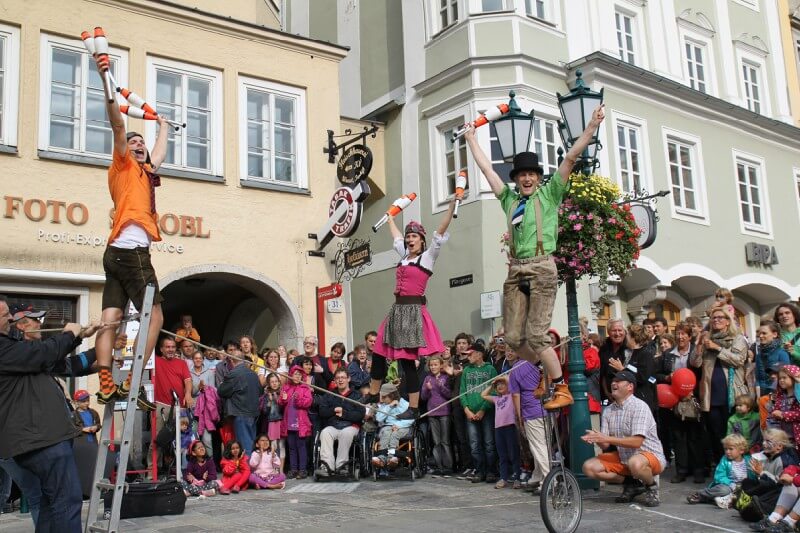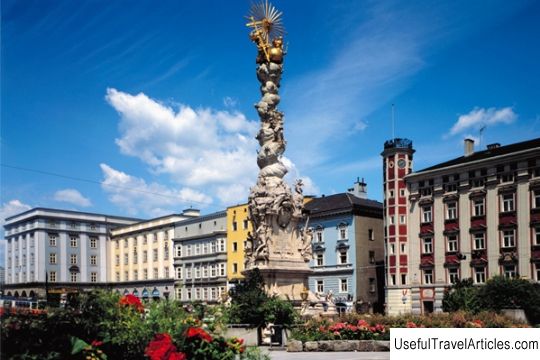Linz. Recreation and entertainment
Rating: 8,6/10 (992 votes)  HistoryLinz was founded in 15 BC. e. by the Romans on the site of a Celtic settlement as a defensive point. Under the name Linz, the city was first mentioned in 799 in connection with the construction of the Church of St. Martin – the oldest in Austria today. During the Middle Ages, Linz was part of the Roman Empire and was important for trade, because it is located at the crossroads of waterways along the Danube with land routes connecting the Czech Republic and Poland with southern Europe . In the 15th century, the city developed rapidly. In 1485, Emperor Frederick III settled in the city and proclaimed Linz the capital. The city had this status for only three years, having lost it after the death of the emperor. In the same period, a bridge was built across the Danube, and in the XVI-XVII centuries. Linz stopped developing due to the plague epidemic. From the end of the 18th century, the city became the center of the bishopric. At the turn of the XIX-XX centuries. Linz is turning into a major industrial center.  Tunnel in Postlingberg mountain Adolf Hitler, born in Braunau am Inn, spent his childhood and adolescence in Linz, and dreamed of rebuilding it, making it an exemplary city of the Third Reich. Not far from Linz during the Second World War was the Mauthausen concentration camp. The city itself was occupied by American and Soviet troops in 1945. In the post-war years, the city was divided into corresponding occupation sectors. In 2009 Linz was elected the European Capital of Culture. TourismLinz has a lot of interesting places worth visiting for tourists. Despite its industrial focus, the city has managed to preserve the charm of the province, which attracts many tourists here. Travelers are offered several excursion routes, the main of which passes through the Old Town, paying attention to all the historical buildings, architectural and cultural monuments. The most interesting thing, however, is the entertainment in Linz – is a train ride in the shape of a dragon through fabulous places, tunnels in the heart of the Postlingberg mountain. A grotto railway was built inside the mountain, leading down the tunnels, and then up to the very top of the mountain.  Pflasterspektakel Circus Art Festival In addition, the city hosts many annual festivals and celebrations, such as the Crossing Europe Film Festival in April, the international circus festival Pflasterspektakel, when the city's streets are filled with a motley crowd of acrobats, clowns and mimes; the Cloud of Sounds music festival in September and other festivals always attract a huge flow of tourists to the city. Linz has a large city tourist office, located in the Old Town Hall, which offers tourists a large selection of information about the city. Here you can buy a single entrance ticket to the city's museums, the zoo and botanical gardens, a train ticket, and a yellow sightseeing train that runs around the historic city center. Here you can also buy a voucher for a certain amount, which can be used in any restaurant in the city. A little north of Linz is the Muhlviertel valley, very picturesque, but almost unknown to tourists. However, there is also something to see here: the Walfartskirche church of the 15th century and the Weinberg castle, the walled city of Freistadt, the best preserved medieval walled city in Austria. Also, the best cycling route in Europe runs through this area: through Passau, Linz, Ens, Mauthausen, Melk, Krems, Tulln, Vienna and Bratislava. It is distinguished not only by picturesque landscapes and many attractions, but also the highest quality of the track, an abundance of good hotels, boat trips.  Main square AttractionsMain square – Hauptplatz, the center of the old town of Linz. The square, which is the largest medieval square in Austria, has existed since 1260. In the center of the square rises the Column of the Holy Trinity, or the 'Plague Column', erected in gratitude to God for getting rid of the plague epidemic. Old Town Hall – the town hall building was built in 1513 in the Gothic style, rebuilt in 1658 in baroque style. Today it houses the Origin of Linz Museum. Old Cathedral – a baroque cathedral built by the Jesuits in 1678 south of the Main Square. New Cathedral – cathedral in the neo-gothic style, built by 1924 (it was built for 62 years). The cathedral towers are 135 meters high.  New Cathedral Church Saint Martin – the oldest working church in Austria. Built in 799, over the centuries it was rebuilt several times, in the 20th century the reconstruction was aimed at restoring its original appearance. Schloss Castle – a castle located in the west of the Old Town, on a cliff overlooking the Danube. The castle was built in 1286 on the old foundations of the ancient Roman fortress of Lentia. It housed the residence of Frederick III, and today it houses the Upper Austrian State Museum. Bruckner Concert Hall – modern building in art nouveau style. Built to host major concerts, festivals and other events. It features a 130-meter glass facade. Pilgrimage Church on Mount Postlingberg – a church at the top of the mountain. A tram line, opened in 1898, leads to it. Nibelungenbrucke Bridge – bridge over the Danube, located in the very center of the city. The bridge offers scenic views of both banks of the river.  Nibelungenbrucke Bridge Electronic Art Center – a center dedicated to the study and advancement of virtual reality and 3D modeling. The Ars Electron festival is held here annually Linz Zoo – a large zoo that has become home to more than 800 animals of different species. Augustinian St. Florian – monastery in the vicinity of Linz, in the town of St. Florian. Founded on the burial place of St. Florian in 1071. The complex of monastic buildings includes the Tillisburg Palace, which attracts with magnificent interiors, frescoed wall paintings, a library, a variety of art collections, a chamber music festival and theatrical performances. There are also interesting museums near the monastery: the Firefighting Museum and the Hunting Museum. Wilchering Cistercian Monastery – monastery eight kilometers from Linz, founded in the XII century. Its main attraction is – Stiftskirche church, We also recommend reading Bregenz. Recreation and entertainment Topic: Linz. Recreation and entertainment. |




